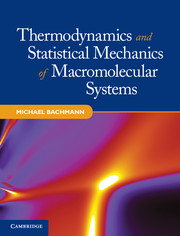Book contents
- Frontmatter
- Dedication
- Contents
- Preface and outline
- 1 Introduction
- 2 Statistical mechanics: A modern review
- 3 The complexity of minimalistic lattice models for protein folding
- 4 Monte Carlo and chain growth methods for molecular simulations
- 5 First insights to freezing and collapse of flexible polymers
- 6 Crystallization of elastic polymers
- 7 Structural phases of semiflexible polymers
- 8 Generic tertiary folding properties of proteins on mesoscopic scales
- 9 Protein folding channels and kinetics of two-state folding
- 10 Inducing generic secondary structures by constraints
- 11 Statistical analyses of aggregation processes
- 12 Hierarchical nature of phase transitions
- 13 Adsorption of polymers at solid substrates
- 14 Hybrid protein–substrate interfaces
- 15 Concluding remarks and outlook
- References
- Index
6 - Crystallization of elastic polymers
Published online by Cambridge University Press: 05 May 2014
- Frontmatter
- Dedication
- Contents
- Preface and outline
- 1 Introduction
- 2 Statistical mechanics: A modern review
- 3 The complexity of minimalistic lattice models for protein folding
- 4 Monte Carlo and chain growth methods for molecular simulations
- 5 First insights to freezing and collapse of flexible polymers
- 6 Crystallization of elastic polymers
- 7 Structural phases of semiflexible polymers
- 8 Generic tertiary folding properties of proteins on mesoscopic scales
- 9 Protein folding channels and kinetics of two-state folding
- 10 Inducing generic secondary structures by constraints
- 11 Statistical analyses of aggregation processes
- 12 Hierarchical nature of phase transitions
- 13 Adsorption of polymers at solid substrates
- 14 Hybrid protein–substrate interfaces
- 15 Concluding remarks and outlook
- References
- Index
Summary
A central result of the discussion in the last chapter was the strong influence of finite-size effects on the freezing behavior of flexible polymers constrained to regular lattices. Thus, (unphysical) lattice effects interfere with (physical) finite-size effects and the question remains what polymer crystals of small size could look like. Since all effects in the freezing regime are sensitive to system or model details, this question cannot be answered in general. Nonetheless, it is obvious that the surface exposed to a different environment, e.g., a solvent, is relevant for the formation of the whole crystalline or amorphous structure. This is true for any physical system. If a system tries to avoid contact with the environment (a polymer in bad solvent or a set of mutually attracting particles in vacuum), it will form a shape with a minimal surface. A system that can be considered as a continuum object in an isotropic environment, like a water droplet in the air, will preferably form a spherical shape.
But what if the system is “small” and discrete? Small crystals consisting of a few hundred cold atoms, e.g., argon [154], but also as different systems as spherical virus hulls enclosing the coaxially wound genetic material [155, 156] exhibit an icosahedral or icosahedral-like shape. But why is just the icosahedral assembly naturally favored?
The capsid of spherical viruses is formed by protein assemblies, the protomers, and the highly symmetric morphological arrangement of the protomers in icosahedral capsids reduces the number of genes that are necessary to encode the capsid proteins. Furthermore, the formation of crystalline facets decreases the surface energy, which is particularly relevant for small atomic clusters.
- Type
- Chapter
- Information
- Publisher: Cambridge University PressPrint publication year: 2014



